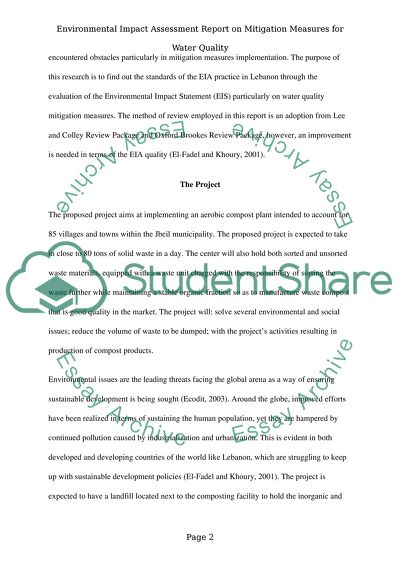Cite this document
(“Mitigation Measures for Water Quality in Lebanon: Solid Waste Essay”, n.d.)
Mitigation Measures for Water Quality in Lebanon: Solid Waste Essay. Retrieved from https://studentshare.org/environmental-studies/1400725-mitigation-measures-for-water-quality-in-lebanon-solid-waste-treatment-center-jbeil-hbaline-union-of-municipalities-of-jbeil-caza-of-jbeil
Mitigation Measures for Water Quality in Lebanon: Solid Waste Essay. Retrieved from https://studentshare.org/environmental-studies/1400725-mitigation-measures-for-water-quality-in-lebanon-solid-waste-treatment-center-jbeil-hbaline-union-of-municipalities-of-jbeil-caza-of-jbeil
(Mitigation Measures for Water Quality in Lebanon: Solid Waste Essay)
Mitigation Measures for Water Quality in Lebanon: Solid Waste Essay. https://studentshare.org/environmental-studies/1400725-mitigation-measures-for-water-quality-in-lebanon-solid-waste-treatment-center-jbeil-hbaline-union-of-municipalities-of-jbeil-caza-of-jbeil.
Mitigation Measures for Water Quality in Lebanon: Solid Waste Essay. https://studentshare.org/environmental-studies/1400725-mitigation-measures-for-water-quality-in-lebanon-solid-waste-treatment-center-jbeil-hbaline-union-of-municipalities-of-jbeil-caza-of-jbeil.
“Mitigation Measures for Water Quality in Lebanon: Solid Waste Essay”, n.d. https://studentshare.org/environmental-studies/1400725-mitigation-measures-for-water-quality-in-lebanon-solid-waste-treatment-center-jbeil-hbaline-union-of-municipalities-of-jbeil-caza-of-jbeil.


